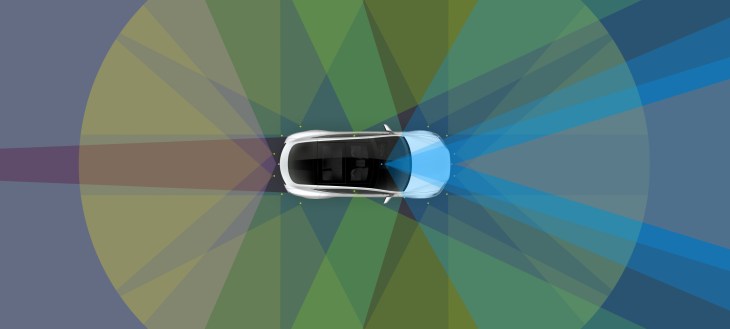Tesla is removing ultrasonic sensors from Model 3 and Model Y vehicles, the next step in CEO Elon Musk’s plan to only use cameras and software to support its advanced driver assistance system and other active safety features.
Starting this month, all Model 3 and Model Y vehicles built for North America, Europe, the Middle East and Taiwan will no longer include the 12 ultrasonic sensors typically found on the front and rear bumpers of its vehicles. Ultrasonic sensors, which measure distance by using ultrasonic waves, are generally used as proximity sensors to support anti-collision safety systems, particularly in low-speed applications like parking.
Tesla announced the changes about 17 months after it said it would remove radar from its vehicles.
The decision to eschew radar or ultrasonics is a contrarian approach to the rest of the industry, which is adding, not removing, sensors from its vehicles to support ADAS.
Automakers typically use a combination of radar and cameras — and now even lidar — to provide the sensing required to deliver ADAS features like adaptive cruise control, which matches the speed of a car to surrounding traffic, as well as lane keeping and automatic lane changes.
Tesla began its so-called Tesla Vision plan in 2021, when it removed radar from Model 3 and Model Y vehicles made in North America, followed by Model S and Model X in 2022. Earlier this year, Tesla expanded that to include Model Y and Model 3 vehicles sent to customers in Europe and the Middle East.
Tesla said the removal of ultrasonic sensors (or USS) will begin with Model 3 and Model Y vehicles. In 2023, it will include Model S and Model X vehicles.
The company said it is also launching a “vision-based occupancy network” that is used in Full Self-Driving (FSD) Beta software — the $15,000 package that augments Autopilot and is not self-driving — to replace the inputs generated by USS. Tesla claims this approach improves Autopilot, giving it longer-range visibility and the ability to identify and discern different objects.
Tesla said that initially any vehicle delivered to customers without USS will have limited or inactive features such as park assist and summon, which allows a person to move their vehicle forward or back via the Tesla app. Those features will eventually be restored via over-the-air software updates, the company said.
